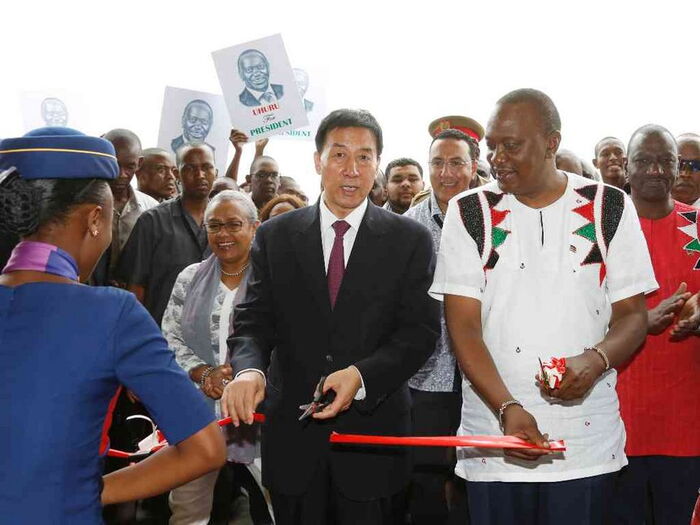 Was kenya fooled to borrow debt?
Was kenya fooled to borrow debt?
Kenya risks losing its sovereignty to China which is bound to seize its national assets once the government defaults on loans.Kenya has lately developed insatiable appetite for credit. And 2017 will be remembered as the time Kenya’s public debt nearly touched unsafe levels after crossing Sh4 trillion mark in March.
In 2015, IMF had warned Kenya over its entry into the international markets. With these developments, it was not surprising that by 2016, Kenya was among 22 countries in Sub-Saharan Africa where public debt rose above 50 percent of gross domestic product (GDP).
From as low as Sh2.5 trillion in December 2014, by December 2017 , Kenyans owed the world a massive Sh4.5 trillion.
This trend was set to tip over Sh5 trillion in 2018, an unfortunate development that might see critical projects sacrificed as a huge chunk of revenue goes towards debt repayment.
With Hu Xiaolian, Chairman Exim Bank of China who called on me this afternoon at State House, Nairobi . pic.twitter.com/kZ3AGFKVRX
— Uhuru Kenyatta (@UKenyatta) May 30, 2016
Signs that Kenya could easily slide into a debt-trap started manifesting in 2014 when Kenya borrowed $2 billion and $750 million in tap sale from the international market.
Just a few months later, the Government approached the International Monetary Fund (IMF) for a dollar loan cushion.
The money, which would only be drawn if shocks hit the Kenyan market was a clear indication that the country had stretched its ability to raise funds in case of an emergency.
The Government has been borrowing aggressively and sinking the borrowed cash into mega infrastructural projects including railway, ports, roads and energy projects.
Naoyuki Shinohara, deputy managing director and acting chair of IMF executive board in February 2015 noted that Kenya’s entry into the commercial loans market had exposed the country, but that the $688.3 million precautionary loan would ‘mitigate the impact of shocks if they materialise’.
RT mwasa “RT DennisOkari: Exim Bank of China may take over Mombasa port if Kenya fails to service the loan it took to build SGR, report by Auditor General Edward Ouko says. pic.twitter.com/SgPGpHl1Wl“
— Juru abdoul ?? (@AbdoulJuru) December 19, 2018
“The economy remains vulnerable to shocks arising from Kenya’s growing integration into global markets, security concerns, and extreme weather events,” Shinohara said then.
As of 2017, Kenya had borrowed three syndicated loans. The first was in October 2015 and two in 2017 . It is currently eyeing another Eurobond or a syndicated loan to repay the October 2017 one by the first quarter of 2018.
This may explain why Kenya had to go back to the IMF in March 2016 for an even bigger cushion debt of $1.5 billion; almost three times the size it had requested a year earlier. This facility expires in the next three months, during which Kenya must settle the $750 million syndicated before April 2018.
A syndicated loan, also known as a syndicated bank facility, is a loan offered by a group of lenders – referred to as a syndicate – who work together to provide funds for a single borrower. The borrower could be a corporation, a large project or a sovereignty, such as a government.
Although Cabinet Secretary Henry Rotich recently said the country took up Sh77 billion to refinance the facility, analysts saw this as a deflection of the fact that Kenya could not pay the debt by October 30 and that it will need to go to the Eurobond market next year to settle this loan.
Is kenya going deep into debt trap?